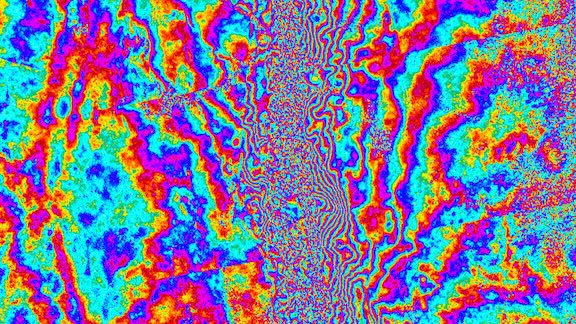

On March 28, 2025, a powerful magnitude 7.7 earthquake struck central Myanmar, sending shockwaves through the region. While the country is still dealing with the devasting aftermath, scientists have used radar images from the Copernicus Sentinel-1 radar satellites to reveal a detailed picture of how the ground shifted during the quake, offering new insights into the mechanics of the tectonic Sagaing Fault and the scale of the seismic rupture.
Image Credit: Contains modified Copernicus Sentinel data (2025), processed by DLR Microwave & Radar Institute/ESA